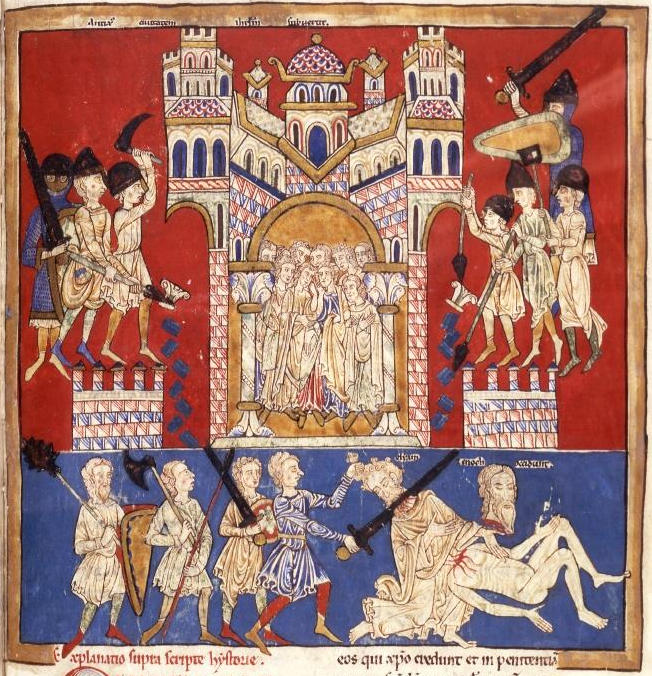The Cardena Beatus Codex
Commentary on the Apocalypse by Beatus of Liébana, SpainFolio 106r. The Antichrist Kills the Two Witnesses
 Note the helmet with face-mask visor. |
 Note the helmet with face-mask visor. |
Inventario: 1962/73/2
Título: Beato de Cardeña
Datación: 1175[ca]-1185[ca] (S.XII)
Contexto Cultural/Estilo: Románico
Lugar de Producción/Ceca: Castrillo del Val
Lugar de Procedencia: Monasterio de San Pedro de Cardeña, Castrillo del Val(Arlanzón (comarca), Burgos) [Atribuido]
Museo Arqueológico Nacional
Referenced as figure 520 in The military technology of classical Islam by D Nicolle
520. Manuscript, Beatus, early 12th century AD, Spanish, Archaeological Museum, Madrid (Hof A).
Referenced on pp.153-4, Arms and Armour of the Crusading Era, 1050-1350, Western Europe and the Crusader States by David Nicolle
383A-E Beatus Commentaries on the Apocalypse, Spain, early 12th century
(Archaeological Museum, Madrid, Spain)
Once again the helmet distinguishes an Iberian warrior from a Frenchman of the same period. The style of this later Mozarab example is, however, strongly influenced by Spanish Romanesque art, which leads to a much more detailed and realistic illustration. The warrior wears a mid-length sleeved mail hauberk over a padded aketon or gambeson, and carries a kite-shaped shield plus a broadsword with slightly curved quillons. But it is his helmet which demands attention. This is of a low-domed variety forged from a single piece of metal, with a broad rim and large face-mask or fixed visor. This is one of the earliest illustrations of such facial protection and its appearance in Iberia is probably significant. Other helmets in this copy of Beatus (B and C) are more straightforward, though they both have clearly broadened nasals. Weapons also include a substantial axe (D) and a crudely-drawn mace (E) with a spiked or knobbed head.